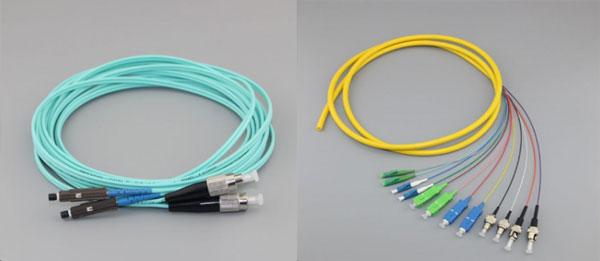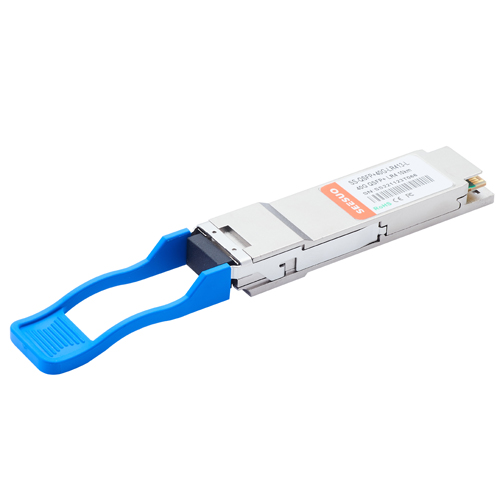With the growing demand for high-speed transmission applications, such as large data, cloud computing and Internet of Things gradually into all walks of life, 10 Gigabit Ethernet is no longer able to meet these needs. In this case, let the transfer rate upgrade to 40 / 100G has become the industry consensus. It is very great to upgrade to 100G immediately, but the vast majority of companies cannot afford the cost of 100G, and 100G technology is still not yet mature, there is still a gap to reach 100Gb/s. In order to meet the current data rate needs, 40G is a better choice and more cost-effective solution. Now many data center servers have been able to carry 40Gb/s transmission rate. The core technology of 40G is also becoming more mature. In addition, more and more manufacturers are competing for 40G market, and this competition greatly reduces the 40G network installation costs.
Compared to 1G upgrade to 10G, 10G upgrade to 40G needs to complete a larger span, It not only reflected in the data transfer rate, but reflected in the technical upgrade as well. Therefore, upgrading from 10G to 40G is much more complicated than upgrading from 1G to 10G. For increasing the reliability and manageability of the 40G fiber deployment, three factors must be taken into account: optical modules, transmission media and preassembled MPO components.
In today's communications network, fiber optic interconnects are unavoidable. Therefore, photoelectric conversion is an indispensable part of the optical fiber network. The main function of the optical module is to carry out photoelectric conversion, this feature makes it to be the one of the most commonly used components in the data center. Without the optical module, the data center will not work properly.
In 40G fiber network, the commonly used optical modules are mainly QSFP + optical module (four-channel SFP + interface optical module) and CFP optical module (C-type pluggable optical module). QSFP + optical modules are more popular than CFP optical module. The price of a single 40G optical module is not expensive. However, a medium-sized data center may require thousands of optical modules. Therefore, the total cost of the optical module is high. Fortunately, the optical module market is not like the switch market, it has not been monopolized. There are many third-party optical modules on the market today that are compatible with different types of switches. Compared with the original brand optical module, third-party optical module does the same thing, but the price is much cheaper than the original one. So the compatible third-party optical module comes to be a great choice for many data centers. In the choice of 40G optical module, the cost is only one factor to consider, in addition to cost, quality is also important, not all third-party optical modules are compatible. Therefore, it is very necessary to ensure its 100% compatibility and interoperability when select 40G optical module.
Transmission medium
The Institute of Electrical and Electronics Engineers (IEEE) has published 40G basic fiber and copper standards a few years ago. Although the cable is becoming more and more popular, the copper in the data center still occupy a place. 40G network based on fiber and copper-based standards are also in use. The standards of commonly used 40G Ethernet include:
40GBASE-CR4: short-distance transmission of 40Gb/s Ethernet over the cooper cable;
40GBASE-SR4: short-distance transmission of 40Gb/s Ethernet over the four-channel multi-mode fiber;
40GBASE-LR4: long-distance transmission of four-wavelength 40Gb / s Ethernet over a single single-mode cable.
So, this is back to the old question we often talk about, optical cable and copper cable, which one should be choose? Copper is cheaper, but the 40G transmission distance of copper support is very limited, only a few meters. The transmission distance of optical cable is longer, single-mode cable 40G transmission distance of up to 10 km, and multi-mode cable OM3 and OM4 suitable for short-distance transmission. The longest distance of OM3 support is100 meters, OM4 is 150 meters. The choice of transmission medium should depend on the specific application.

40G MPO components
According to the IEEE standard, 40G Ethernet transmission uses four-channel multi-mode cable, and the IEEE 802.3ba standard also specifies the choice of MPO connectors for standard-length multimode fiber connections. Most of the 40G Ethernet multimode optical modules are designed based on MPO technology. It is advisable to use the MPO technology to increase the fiber density, but some new problems arise as well. With the increase in the number of optical fiber, the difficulty of wiring and optical fiber splicing is increasing in data center, Different from the traditional dual-fiber connection, the field termination MPO connector is very difficult. So in the 40G cabling deployment, most data centers choose pre-terminated MPO components, so that the stability and reliability of network can be improved, but also can save more manpower. Before cabling, pre-calculate the length of the cable required, and customizing the required MPO components will save time and effort.
Conclusion
In the 40G transmission, the choice of high-quality compatible third-party optical module can save a lot of money. To develop the most economical and reliable 40G deployment plan, it has to combine specific applications with 40G transmission media characteristics, pre-terminated MPO components plays an integral role in a flexible and easy-to-manage 40G cabling deployment. 40G will become a milestone in the history of network transmission.








































































